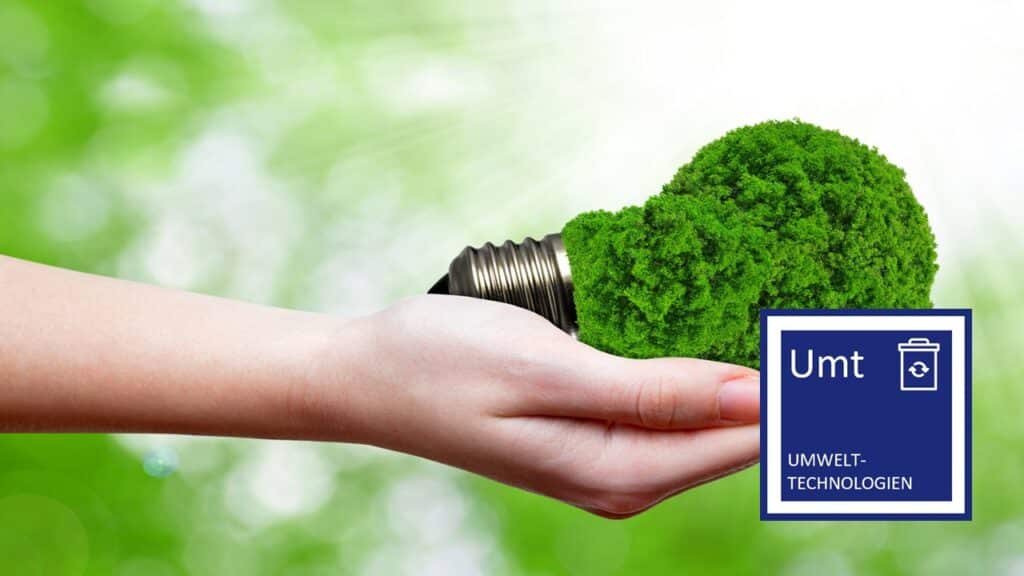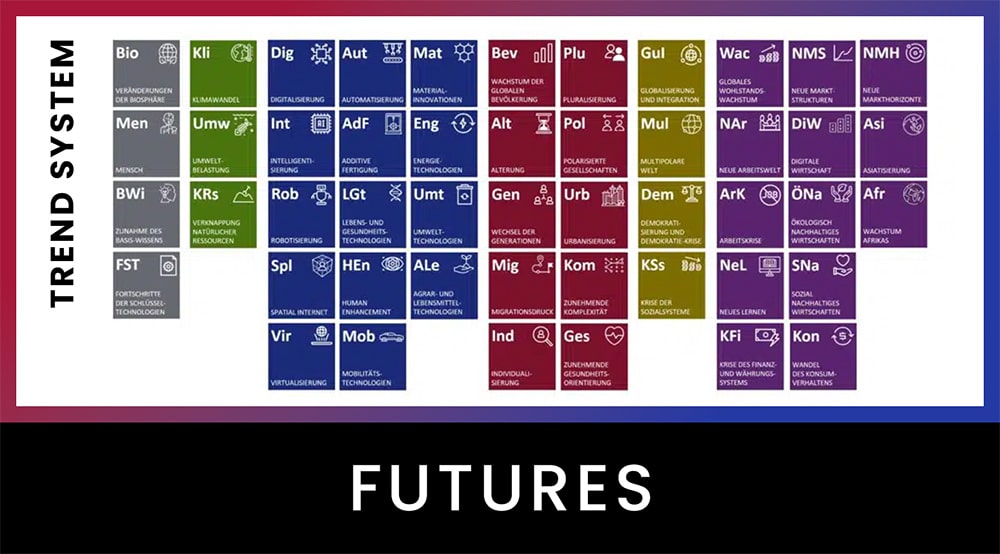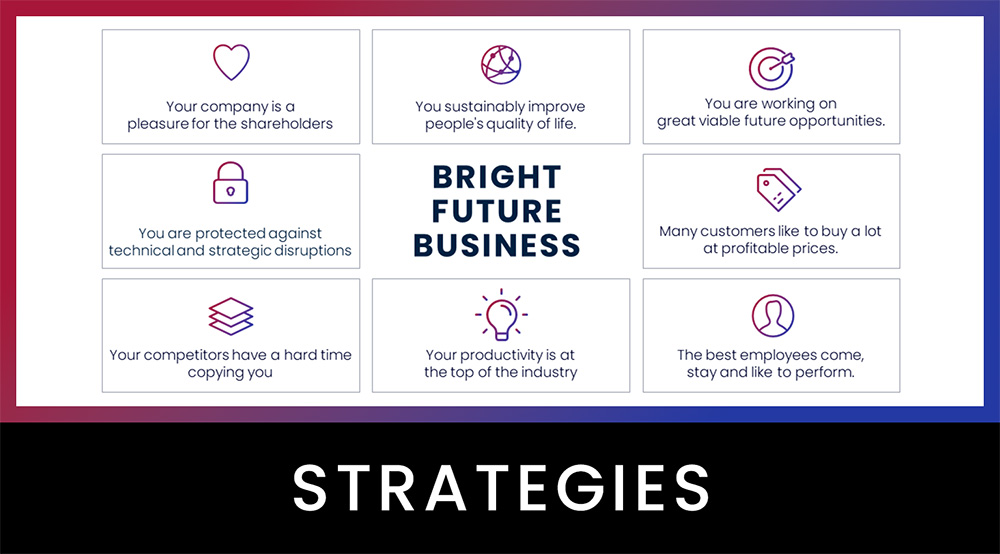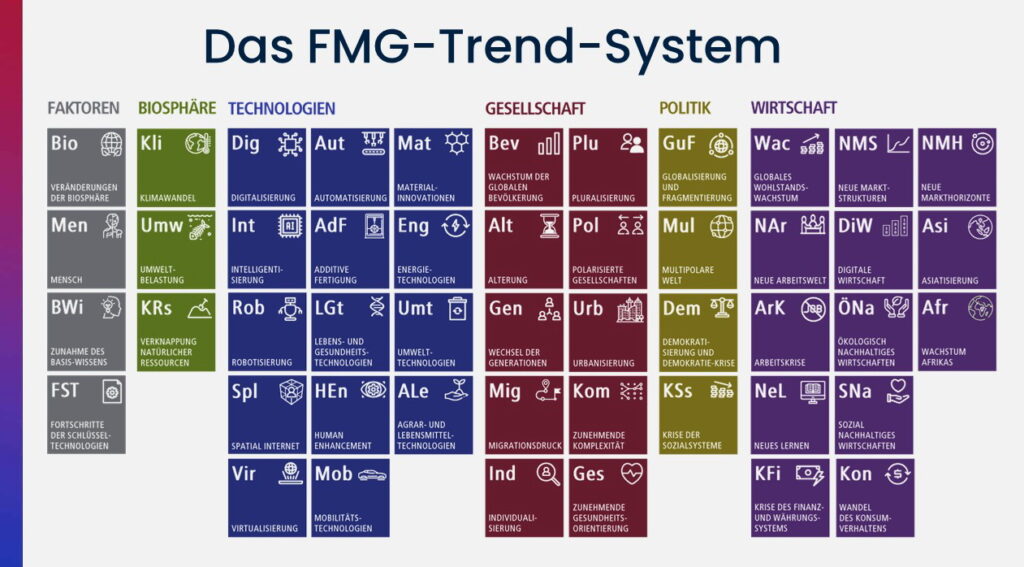Megatrend environmental technologies
From the FMG Trend System: For your future-proof company
Environmental technologies as drivers of innovation
Environmental protection has long since developed into a relevant economic factor. Environmental technologies are no longer just a reaction to ecological problems, but active drivers of innovation and sustainable growth. The industry has a high level of research and development intensity and is characterized by constant progress.
Increasingly, environmental aspects are being considered throughout the entire product life cycle: From development to production and disposal. The aim is to use natural resources more efficiently and minimize harmful environmental impacts. This is not just about greener production, but also about decoupling economic growth and resource consumption. To the overview of all megatrends

What do environmental technologies mean for companies?
A wide range of opportunities are opening up for companies: the future market of the green economy is growing rapidly, ecological innovations ensure long-term competitiveness and at the same time strengthen social trust in products and brands. Environmental technologies help companies to meet new legal requirements, cut costs and reduce their carbon footprint.
Innovative technologies for waste gas reduction, recycling management and water treatment are not only ecologically sensible, but also economically attractive. Solutions that directly address environmental problems are particularly in demand – for example, methods for CO₂ capture or technologies for conserving resources in industrial processes.
- Alongside human motives, environmental and other technologies are the most transformative trends. We use our tools to shape the world, mostly to our advantage.
- The environmental technologies megatrend is just one of many that could be relevant to the future of your business.
- In addition to megatrends from the biosphere, society, politics and the economy, FMG’s trend system also includes the drivers that trigger trends such as environmental technologies, the future factors. To the overview of all megatrends
Four key developments in environmental technologies
1. recycling and circular economy
Recycling is becoming the key to the sustainable use of resources. Raw materials should remain in the economic cycle for as long as possible – through material recycling, return and upcycling.
Sub-trends and technologies:
Battery recycling: In view of growing e-mobility, the recovery of lithium, cobalt etc. is crucial for security of supply.
Upcycling: Old products are creatively and qualitatively upgraded, e.g. furniture made from old wood or design objects made from industrial packaging.
Urban mining: Cities are seen as raw material depots – this means the targeted recovery from buildings, infrastructure and old appliances.
Chemical recycling: Enables the recycling of composite materials and hard-to-separate plastic waste.
Recycling innovations: New detection technologies and sorting systems improve the efficiency of the circular economy.
2 Carbon Capture, Storage and Utilization
Technologies for CO₂ capture and utilization are rapidly gaining in importance – both in industry and in the energy sector. The aim is to permanently bind climate-damaging carbon dioxide or to reuse it sensibly.
Sub-trends and technologies:
Carbon Capture and Storage (CCS): Refers to the capture, transportation and storage of CO₂ in geological formations in order to make fossil-based electricity generation virtually carbon dioxide-free.
Carbon Capture and Usage (CCU): Includes processes for CO₂ utilization, e.g. for the production of new plastics or fuels.
Climate farming: Describes the build-up of humus using biochar from plant residues, which stores CO₂ in the soil in the long term.
Negative Emission Technologies: New processes for actively removing CO₂ from the atmosphere are becoming increasingly marketable.
3. water purification technologies
Clean water is a global challenge. Water treatment and recycling are key tasks both in emerging countries and in high-tech industries.
Sub-trends and technologies:
Seawater desalination: Advances in energy-efficient and regenerative processes enable new sources of drinking water.
Nanofiltration: Ultra-fine filters remove heavy metals, germs or micropollutants from industrial wastewater.
Super-wettable nanowire membranes: selectively remove oil or other pollutants from water with high capacity.
Reverse osmosis & ultrafiltration: Membrane-based systems for the safe production of drinking water from sea or waste water.
Generating energy from wastewater: New systems generate electricity through digestion processes or thermal conversion.
4. new environmental technologies and green materials
In addition to traditional technologies, new concepts are emerging that are geared towards prevention, sustainability and biocompatibility. The focus is on bio-based materials and emission-free processes.
Sub-trends and technologies:
Green building: resource-saving construction and sustainable operation through intelligent building automation and green building materials.
Green building materials: Materials made from renewable raw materials or recycling processes reduce the ecological footprint.
Edible packaging: Biodegradable or even edible alternatives to conventional packaging.
Electrostatic filters: Remove fine dust and particles from industrial exhaust gases – energy-efficient and low-maintenance.
Geoengineering: Controversial but debated measures for actively influencing the climate, e.g. through solar radiation management.
Waterless cleaning technologies: Cleaning materials with light, ultrasound or special solvents without water.
Aftercare environmental protection: technologies for remediation of contaminated sites, air purification and waste treatment, especially in emerging countries.
Eco-technology: Use of natural ecosystem processes to solve technical environmental problems – e.g. constructed wetlands.
Conclusion: Using environmental technologies as a targeted opportunity
The environmental technologies megatrend shows how technological innovations contribute to the protection of natural resources and open up new markets. There is a wide range of strategic potential for companies – from increasing efficiency and new business models to positioning themselves in the growing green economy.
An often underestimated advantage: environmental technologies help to reduce external costs – for example by avoiding damage to the environment and health. What is still poorly priced today from a social or regulatory perspective may cause considerable economic burdens in the future.
- With the Future Radar Program, you can identify which aspects of environmental technologies will be relevant for your company in the future and how you can use them as a strategic opportunity.



































